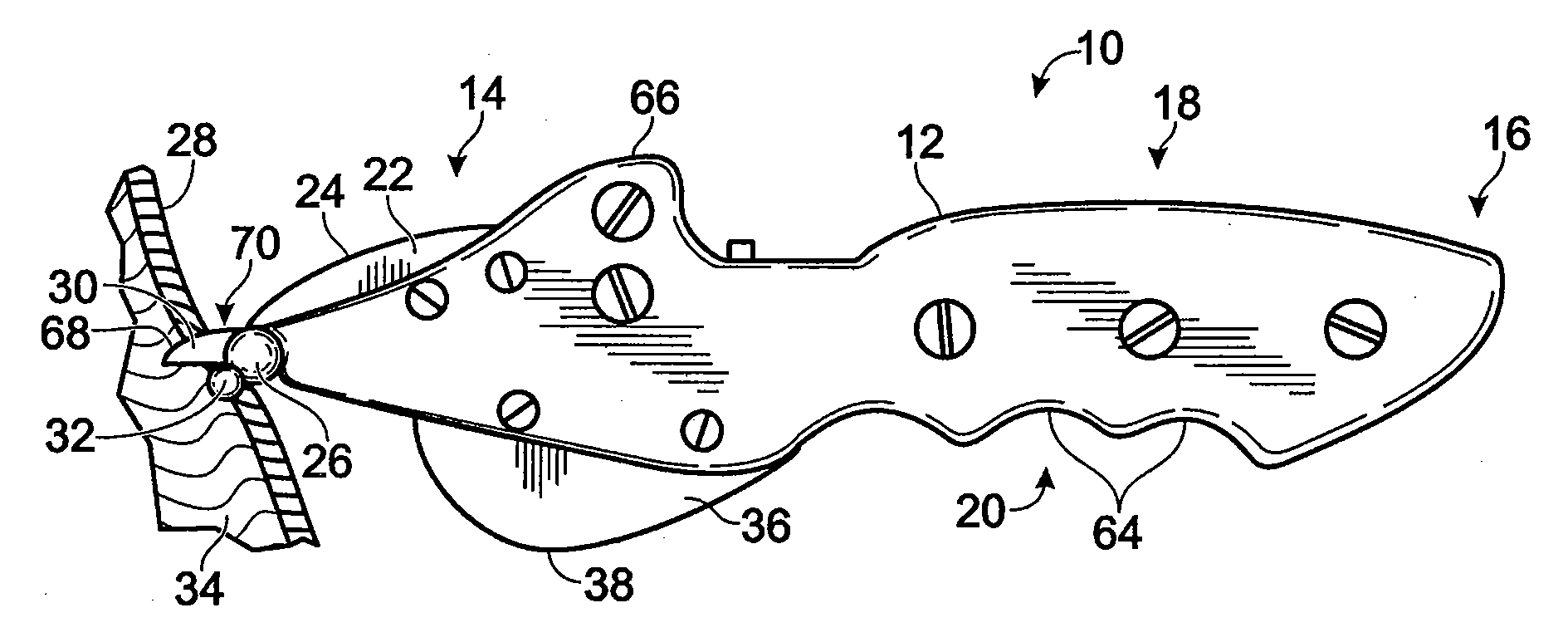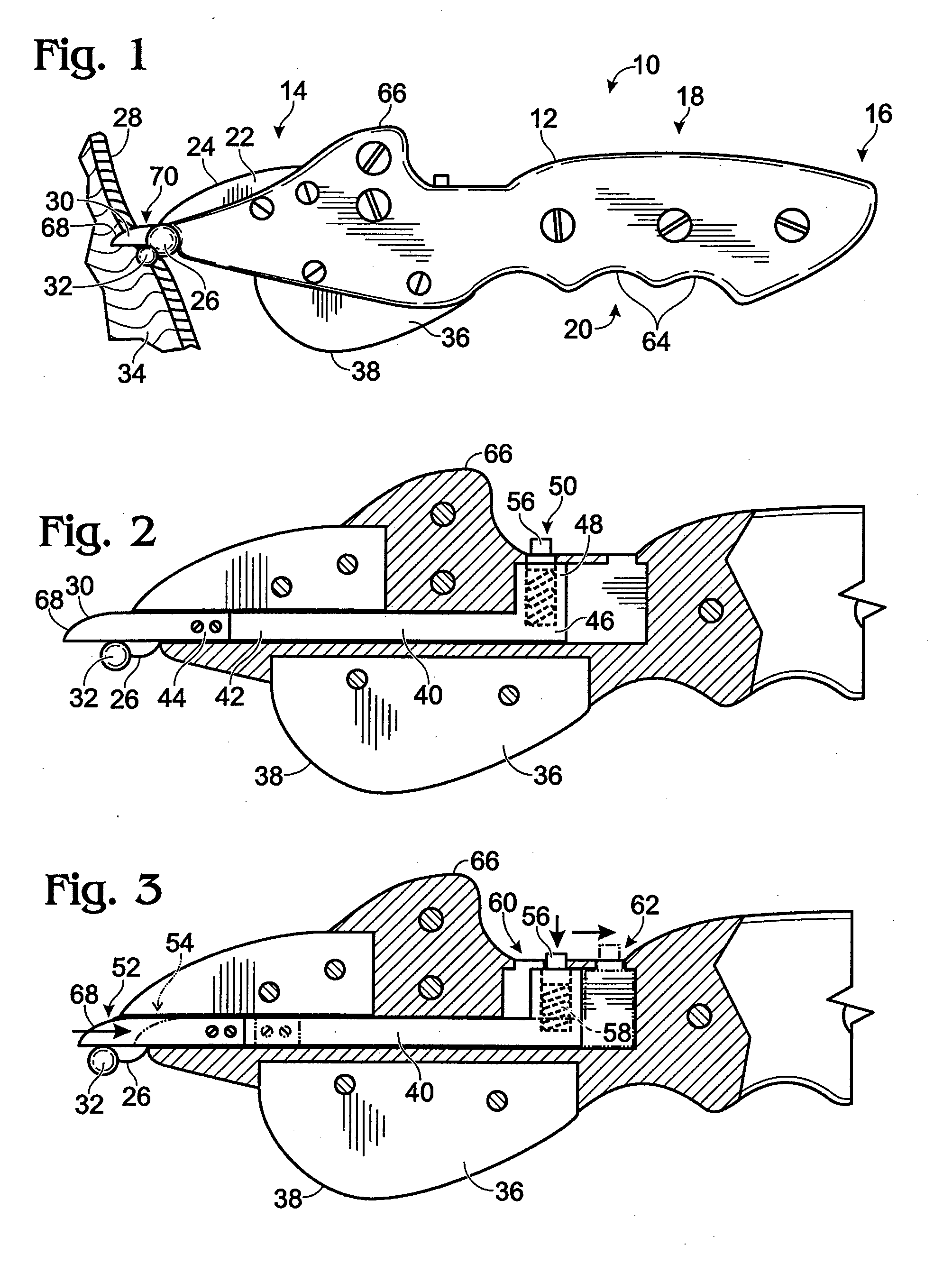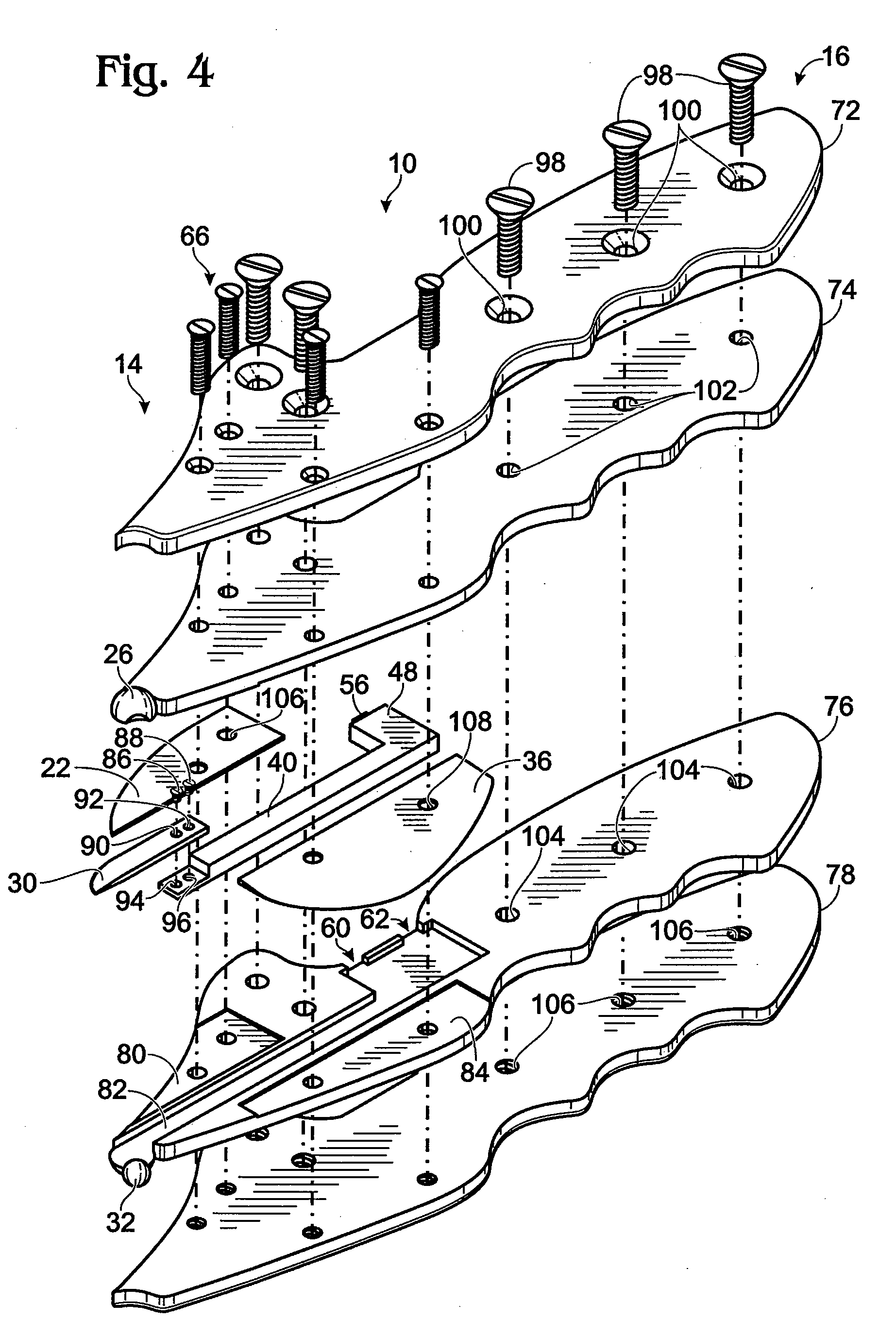Skinning Knife
a technology of skinning knife and blade, which is applied in the field of skinning knives, can solve the problems of awkward use of devices and too easy use, and achieve the effect of improving safety
- Summary
- Abstract
- Description
- Claims
- Application Information
AI Technical Summary
Benefits of technology
Problems solved by technology
Method used
Image
Examples
embodiment 110
[0044]In use of alternative skinning knife embodiment 110, the spreading members are initially retracted so that the tip 132 of the multi-purpose blade 112 can be used to punch a hole in the animal hide. Then, the spreading members 126 and 128 are moved to their forward most position so that, as multi-purpose blade 112 is used to slit the hide, the two separated parts of the hide are spread. Finally, when a sufficiently long slit has been made in the hide, the spreading members are again retracted and the multi-purpose blade 112 is used to separate the hide from the meat.
[0045]Referring now to FIGS. 8-10, a second alternative embodiment of a skinning knife 150 is shown that is a variant of alternative skinning knife 110. Like skinning knife 110, skinning knife 150 features a multi-purpose blade 112 having a beveled cutting edge 114, and a two-part handle 116 attached on either side to blade 112 by two screws 124. However, skinning knife 150 further provides a two-part blade sheath 1...
embodiment 150
[0046]The mechanism that actuates movement of blade sheath 152 and triangular spreading member 154 in skinning knife embodiment 150 is now described with reference to an enlarged side elevation shown in FIG. 10. Depressing a sheath thumb tab 156 compresses a flat spring 157 preferably having overlapping leaves, which unlocks a spring pin 164 from its forward latched position 165 so that it may travel fore and aft within a channel 166 cut into, and accessible from, a lower surface of the tang of blade 112, behind cutting edge 114. The surface of sheath thumb tab 156 may be fashioned with a thumb grip, preferably having a roughened, sticky, or otherwise high-friction surface, to prevent slipping. A second pin 168, located adjacent to triangular spreading member 154, travels in tandem, within a second channel 170, which is accessible from a top surface of blade 112. When spring pin 164 reaches the rearmost extent of its travel, pin 164 drops into a rearward latched position 172 until s...
embodiment 210
[0051]FIG. 18 presents an add-on spreading member 227 that may be used to convert a conventional knife blade 228 into a skinning knife resembling fixed blade embodiment 210. Spreading member 227 comprises a generally convex, closed object, into which a slit 230 may be cut for receiving a sharp tip of knife blade 228. Spreading member 227 may be hollow or solid. In a preferred embodiment, spreading member 229 is spherical; however, in general, consistent with previous embodiments, spreading member 227 may be of any shape that presents a forwardly convex surface in the direction of the tip of knife blade 228. An optional set screw 232 may be mounted orthogonally to the slit 230 through a set screw hole 234 for securing spreading member 226 to knife blade 228 as the set screw is tightened and comes into contact with the surface of knife blade 228. Add-on spreading member 227 is preferably made of one or more materials such as metal, plastic, glass, mineral, or crystalline material, or ...
PUM
 Login to View More
Login to View More Abstract
Description
Claims
Application Information
 Login to View More
Login to View More - R&D
- Intellectual Property
- Life Sciences
- Materials
- Tech Scout
- Unparalleled Data Quality
- Higher Quality Content
- 60% Fewer Hallucinations
Browse by: Latest US Patents, China's latest patents, Technical Efficacy Thesaurus, Application Domain, Technology Topic, Popular Technical Reports.
© 2025 PatSnap. All rights reserved.Legal|Privacy policy|Modern Slavery Act Transparency Statement|Sitemap|About US| Contact US: help@patsnap.com



